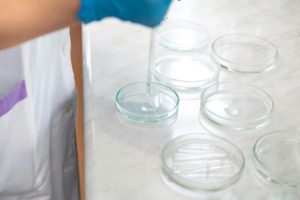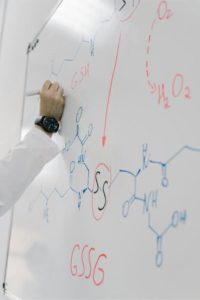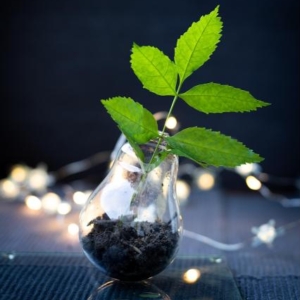At a Glance
- PHA and PET packaging: PHA is compostable but lacks PET’s strength, clarity, and heat resistance.
- Production problems: Complex, costly, and inconsistent due to bacterial fermentation synthesis.
- Performance limits: Often needs PLA blending to function — not viable solo for most packaging.
- Eco-reality: Biodegrades well, but harsh extraction methods raise sustainability concerns.
In Part I, PLA made strong attempts to challenge PET’s title. It scored some points in areas like cold beverages. However, it fell short due to temperature limitations and cost issues. Now it’s time for our second challenger to enter the ring.
Meet PHA (polyhydroxyalkanoate — good luck saying that!). This bacteria-derived product offers improved biodegradability and aims to achieve what PLA cannot. But can this fermentation-based fighter overcome the challenges that have kept it in development for over 70 years?
As a food business professional, you still face the same fundamental challenge: balancing consumer demands for sustainability with the realities of performance, cost, and reliability. One wrong material choice could leave you explaining to customers why their packaging failed, defending runaway costs to your CFO, or worse, dealing with supply chain disruptions that shut down production.
After we spoke with Conor Carlin about PLA, we sat down with him again to discuss PHA. Conor is the President of Clefs Advisory LLC and brings deep expertise at the intersection of packaging and sustainability. He previously served as the 2024 President of the Society of Plastics Engineers and was formerly the General Manager for ILLIG in North America. His background spans materials, packaging technologies, policy, commercial strategy, and market intelligence.
Let’s see what PHA brings to this ongoing battle for packaging supremacy.
Understanding PHA: The Bacterial Alternative
 Unlike PLA, which starts with plant materials that get fermented, PHA is actually made BY bacteria. Think of it as bacteria’s natural storage system — like how humans store fat, bacteria store PHA as their energy reserve. Scientists found this in the 1950s during early polymer research. It took decades to learn how to use this process for commercial purposes.
Unlike PLA, which starts with plant materials that get fermented, PHA is actually made BY bacteria. Think of it as bacteria’s natural storage system — like how humans store fat, bacteria store PHA as their energy reserve. Scientists found this in the 1950s during early polymer research. It took decades to learn how to use this process for commercial purposes.
The process works by feeding bacteria specific nutrients (not your award-winning secret sauce, but smaller microbes and organic matter), then stressing them by removing key elements, such as nitrogen. When stressed, the bacteria start producing PHA as backup energy storage. It’s a fascinating natural process, but making it a dependable manufacturing system has been very tough.
The Production Challenge: Why It Takes So Long
Here’s where PHA faces its biggest hurdle. PHA production uses diluted bacterial solutions, while PET and PLA rely on concentrated materials that are easier to process. This creates an entirely different manufacturing challenge.
The Extraction Problem
Getting PHA out of bacterial cells is like trying to extract honey from honeycomb — except the honeycomb fights back. The bacterial cell walls must be broken down using harsh chemicals, such as bleach or organic solvents, which can damage the PHA quality. Each extraction step adds cost and complexity. It can also change the final product’s characteristics.
Consistency Issues
Remember how PLA faced variability challenges? PHAs are even worse. Bacteria generate the material. This means that the strain, feeding schedule, stress timing, and environment all influence the final product. Small changes in process conditions can have a significant impact on quality. This makes it hard to ensure consistent performance.
Scale-Up Difficulties
Scaling up PHA production is tricky. This happens because it involves biological processes. These are not the same as those used in making traditional polymers. Each scale increase brings new factors that can change bacterial behavior and product quality.
Performance Face-Off: PHA vs PET
Biodegradability: PHA’s Strong Suit
PHA breaks down more easily than PLA using water through hydrolysis, and doesn’t produce methane in landfill conditions. This means it doesn’t create microplastics. So, it is really eco-friendly in most situations. This represents a real advantage over both PET and PLA.
Structural Limitations
 Pure PHA struggles with basic performance requirements that PET maintains. It’s challenging to achieve good clarity, and the material requires assistance to be functional. Today, most PHA products are mixed with PLA. This blend enhances their impact strength, heat resistance, and crystallinity.
Pure PHA struggles with basic performance requirements that PET maintains. It’s challenging to achieve good clarity, and the material requires assistance to be functional. Today, most PHA products are mixed with PLA. This blend enhances their impact strength, heat resistance, and crystallinity.
Limited Applications
Currently, you’ll mainly find PHA in straws and thin films. PHA isn’t yet used to produce many cups, bowls, or trays in significant quantities.
Temperature Performance
PHA doesn’t have the same strict temperature limits as PLA. However, it can’t match PET’s dependable performance across different temperatures.
The Economics: A Premium Problem
PHA faces even steeper cost challenges than PLA. PHA is costly to produce. This is due to the complex production process, extraction challenges, and low yields. When you factor in the need to blend with PLA for most applications, the cost premium becomes even more significant.
Diluted production streams mean you need to process more material to get the same output as traditional polymers. Every process step adds up. Each step, including extraction, purification, and solvent recovery, raises costs and can also affect quality.
An Environmental Reality Check
 While PHA offers genuine biodegradability advantages, the environmental story isn’t simple. Some life cycle assessments reveal that the complex production process has a larger carbon footprint than traditional polymers. The process includes many steps for extraction and purification.
While PHA offers genuine biodegradability advantages, the environmental story isn’t simple. Some life cycle assessments reveal that the complex production process has a larger carbon footprint than traditional polymers. The process includes many steps for extraction and purification.
Harsh chemicals and organic solvents used in extraction make PHA less sustainable. The waste produced during processing adds to this issue. It breaks down naturally at the end, but its production may not be as green as the marketing claims.
Your Strategic Action Plan
The strategic thinking from Part I is also relevant here. You should still weigh the value of PET. However, keep in mind the unique challenges of PHA.
Step 1: Assess realistic applications. PHA is great for coatings on compostable materials, such as molded fiber containers. It replaces polyethylene films. Don’t expect PHA to handle structural applications that require pure material performance.
Step 2: Understand actual costs. Factor in PHA’s blending requirements with PLA. If you need PLA anyway to make PHA functional, analyze whether PLA alone might be more cost-effective for your application.
Step 3: Check supply chain reliability. Recent bankruptcies and buyouts in the PHA space mean you should assess supplier stability closely. The complex production process makes supply disruptions more likely and more challenging to predict.
Step 4: Test performance expectations. PHA comes from bacteria. This means batch-to-batch differences are larger than with traditional materials. Establish quality control processes that account for this natural variation.
Step 5: Plan for limited infrastructure. PHA requires industrial composting facilities, just as PLA does, to realize its environmental benefits.
Ensure your market has access to appropriate disposal infrastructure before making sustainability claims.
Ding, Ding, Ding! Round Two Results
 PHA exhibits excellent biodegradability but faces manufacturing challenges that have persisted for over 70 years. Think of PHA as that promising rookie who keeps getting called up to the majors but somehow always ends up back in the minors.
PHA exhibits excellent biodegradability but faces manufacturing challenges that have persisted for over 70 years. Think of PHA as that promising rookie who keeps getting called up to the majors but somehow always ends up back in the minors.
The need to blend PHA with PLA for most applications raises an awkward question: if you need PLA to make PHA work, why not just skip the middleman? It’s like needing a wingman to talk to your wingman.
PHA excels in certain applications, such as biodegradable coatings. Its excellent breakdown qualities offer real benefits. But asking it to replace PET across the board is like asking a food truck chef to cater a wedding for 500 people — they might make great tacos, but that doesn’t mean they’re ready for the big leagues.
PET keeps its championship belt through superior performance, established infrastructure, and the simple fact that it actually works predictably every time. While PHA offers genuine environmental benefits, the production challenges keep it stuck in the training gym rather than ready for the main event.
Coming up in Part III: PEF steps into the ring with claims of actually outperforming PET in key areas. Can this bio-based challenger finally dethrone the champion, or will it face its own set of limitations? We’ll explore whether polyethylene furanoate represents the future of packaging materials.
Do you want to learn more about packaging material options? Visit our Learning Center today and explore a vast array of topics.
Would you like to know more about Conor Carlin and his work at Clefs Advisory LLC? Connect with him on LinkedIn today.

